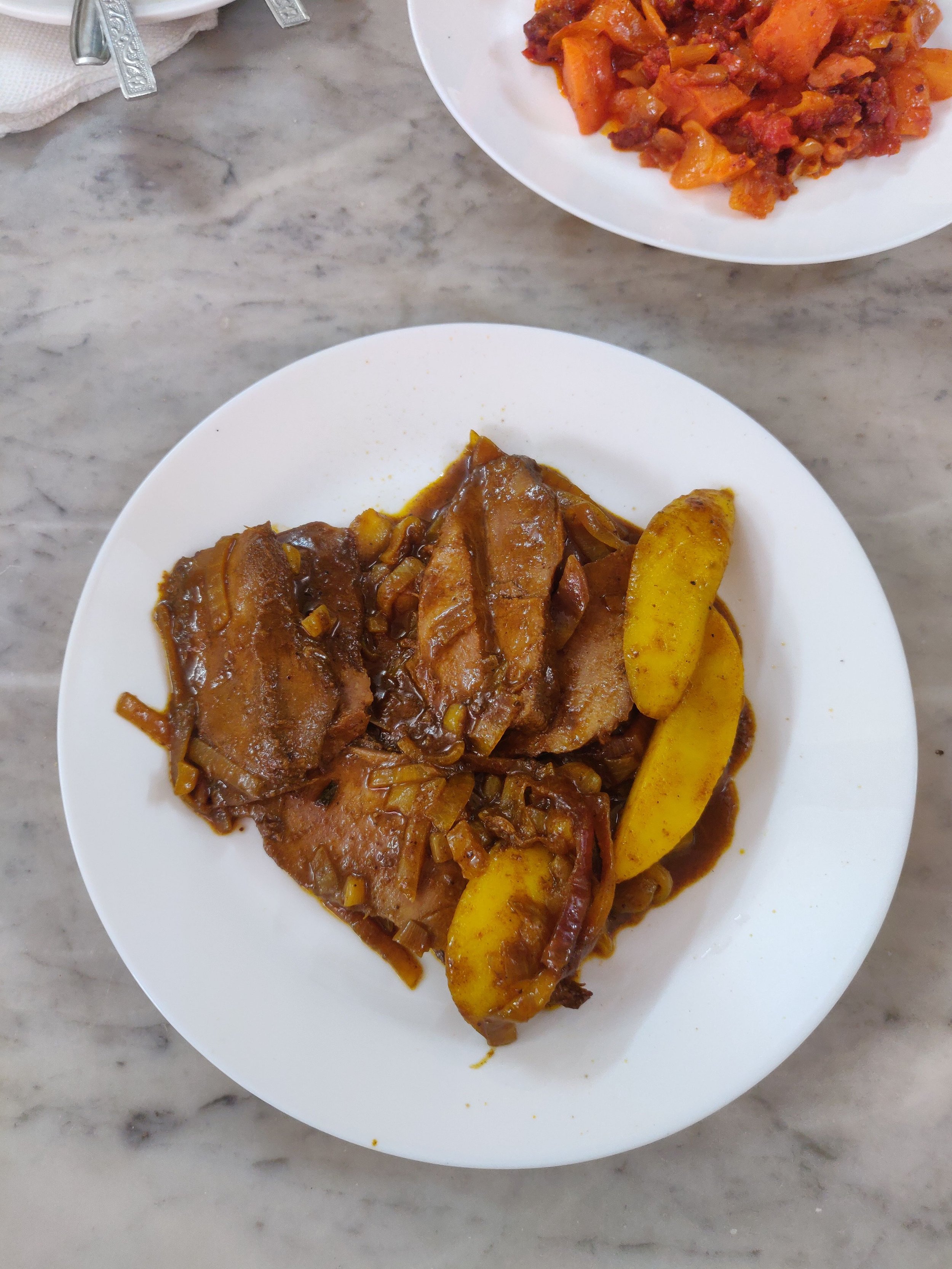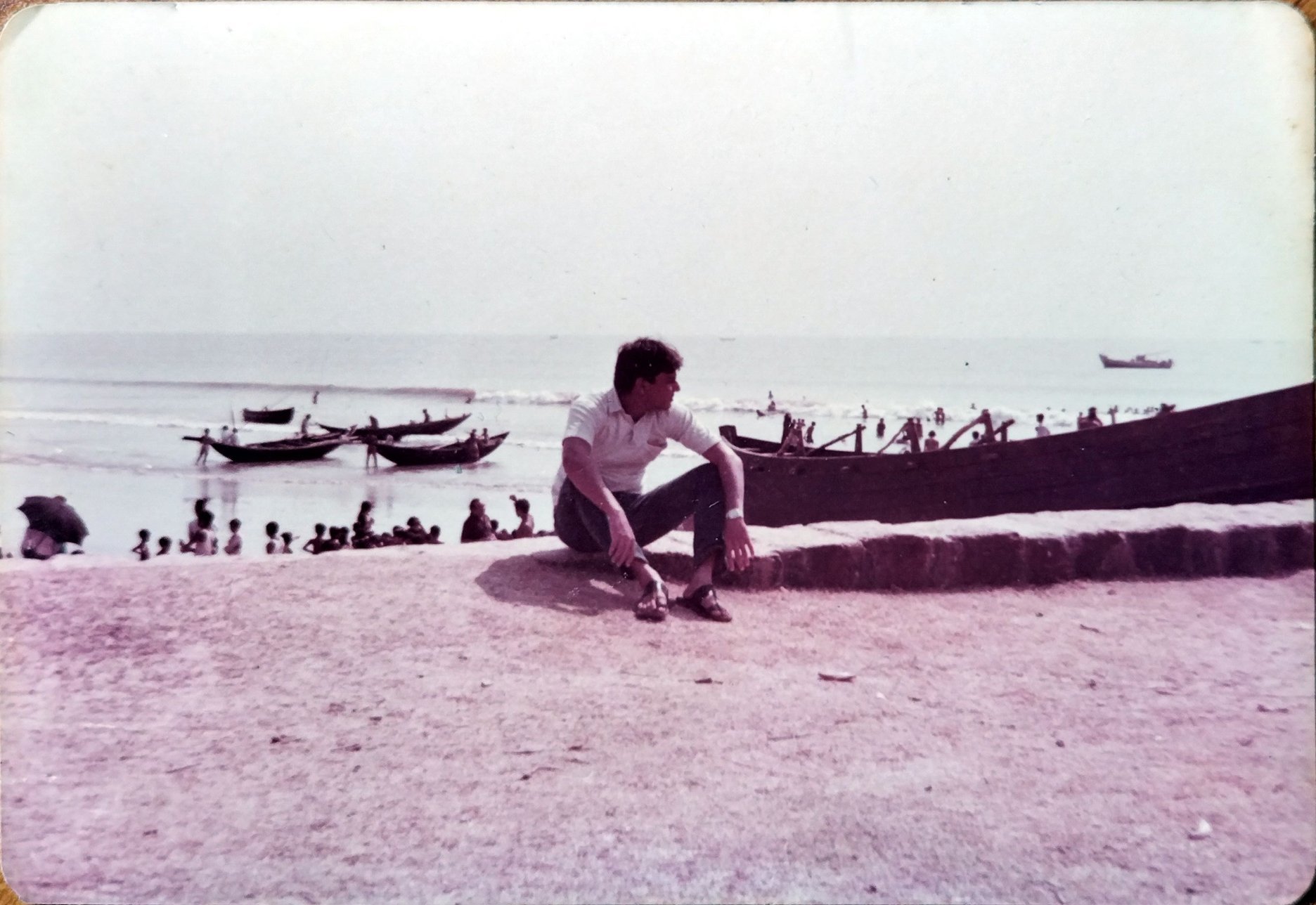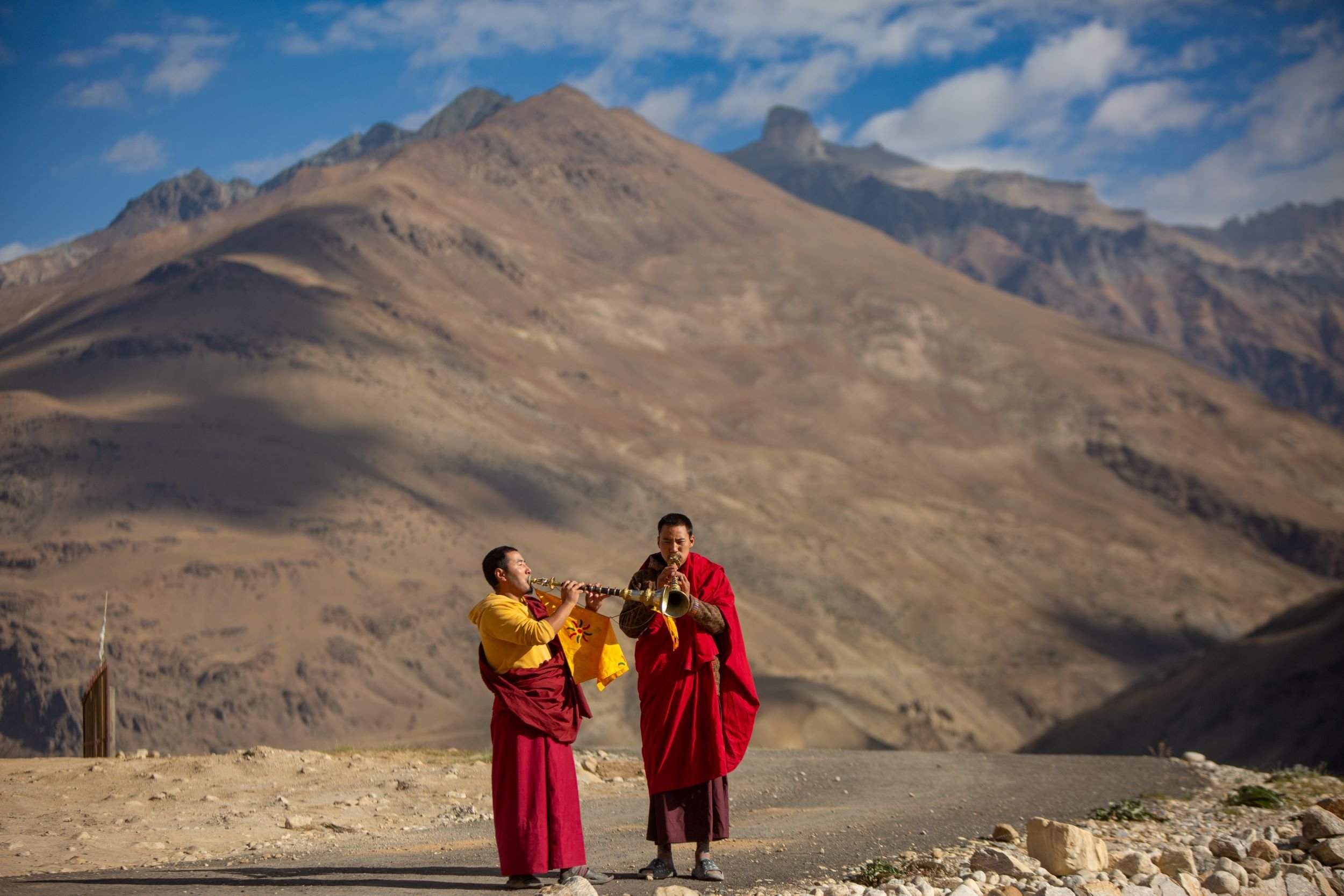A Recipe to Cure Home Sickness

Roast beef and its role as a salve to homesickness for a Bomoicar .
Roast beef is the taste of home. Especially when you’ve been living away from home for 15 years.
I grew up Roman Catholic in a small village in Goa. Meat has always been part of our table. Beef, especially, is quite common. We’ve eaten it in corned form — straight out of a tin that my father would bring us on his visits home from the Middle East, in curries with chunks of potatoes added for body, in minced formed in croquettes, or hidden in crusty samosas and flaky patties, or beaten and crumbed and served between pao or poee as cutlet pao. My favourite, however, has been roast beef: chunks of meat marinated in a paste of Kashmiri chilli, toddy vinegar masala and whole spices, and cooked till tender.
I learned the true value of this simple dish when I moved to Mumbai.
Finding Goa in Mumbai
Initially, it was a struggle finding good buff (beef is contraband in the city). Living in Catholic neighbourhoods meant there was a preferred butcher that Catholic aunties would frequent. They would share this information only after they had found some connection to you — the simple thing to remember is that all Goans are connected in some way or the other. But, as someone who doesn’t like cooking, I preferred sourcing the cooked version of the meat, especially prepared the Goan way. Thus began my search for Goan restaurants in the city and delightedly ordering plates of tongue roast from Snow Flake in Marine Lines and weeping at the spiciness of the beef chilli fry at New Martin’s in Colaba. I scoped out bakeries and tiny stalls in Catholic neighbourhoods like Orlem, Bandra and Vakola and picked up croquettes, pan rolls, samosas and cutlets.
The food was delicious and homely, but expensive. I graduated to doing the next best thing: carry food from Goa.
My mother makes a killer beef roast, beef croquettes, and roulade (tender slices of beef rolled around sliced veggies and choris). I would carry kilos of her food back with me, frozen and packed in layers of plastic and sealed so that not a drop of gravy was wasted. I carried it by train, by bus, and finally, by aeroplane — this meant I could carry just fried croquettes, the rava still crisp, and be able to eat it as soon as I reached home.
Joanna's mother's roast beef
On one memorable bus trip, we were stopped at the border to check for that commonly smuggled contraband: alcohol. My mother had made me salted tongue and frozen it (into one solid block) so that it would survive the 12-hour bus ride. As luck would have it, a policeman made me open my bag. On seeing this solid block, he made me unwrap the layers of newspaper and plastic and then asks ‘what is it’. I was stumped. How do I explain roast tongue — my Konkani is limited, as is my Marathi? It was during the time when beef was turning into a political issue, and I felt a slight frisson of fear of getting caught with it. I stuttered through an explanation about it being frozen food. Luckily for me, content that it wasn’t alcohol, he left it alone.
Travelling with a Piece of Home
Over the years, I have carried a lot of food with me to Mumbai, from dry spices and dried fish to masalas and packets of sausages. Roast beef has been a part of every food parcel. Big chunks of meat, with a dark gravy — the colour dependent on the amount of pepper and whole spices used, its pungency an effect of the potency of the Kashmiri chillies. Each household comes with its own recipe: some make it dry, some keep a thin gravy, some brown the meat after marinating it, some slow cook it, others use a pressure cooker. My mother’s version uses liberal amounts of toddy vinegar so the roast stays good for long, and she pressure cooks it so the meat is never underdone. The beauty of this roast beef was that it could be eaten plain, sandwiched between slices of buttered bread, or jazzed up with onions to make a chilli fry. Every slice reminded me of home: of opening my school tiffin to find a sandwich of beef roast laid on a bed of buttered bread; of Christmas lunches where slices of beef roast or meatloaf would be laid out like cake on patterned plates, and of trying different roast preparations whenever the family went out to eat in Goa. Each slice reminded me of a home where you weren’t judged for your food choices.
Anyone reading the news today knows that beef is a political issue in India. Maharashtra is one of 20 states in India to ban the slaughter of cows, under the Maharashtra Animal Preservation Act of 1976, which came into effect in 2015. A few years later, the Bombay High Court said it was no longer illegal to possess or eat beef, as long as it had been brought into Maharashtra from outside. Today, I can eat beef in Mumbai but its usually imported (in the fancier restaurants) or the inferior water buffalo meat, referred to as buff.
The Best Roast Beef in Goa
Now that I have moved back to Goa, roast beef is still a big part of my dining table. I don't live at home, so my mother sometimes sends over food. Unsurprisingly, there’s a lot of beef roast, which I turn to at times when there’s no meat/ fish/ any substantial protein in my meals. Suffice to say, I rarely eat or order this when dining outside, though some restaurants and even food trucks in Goa do a good job with their roast beef (Beef Assado) including Bhatti Village, Souza Lobo, Mummai, and Noronha’s Corner. I am too accustomed to the flavour of the one made by my mother. It is still my taste of home.
Beef chilli at New Martin
Beef Tongue at Snow Flake
Recipe: Beef Roast with Gravy
(Adapted from a recipe by Joyce Fernandes)
Ingredients
1 kg beef
1 medium-sized onion, chopped
1/4 kg potatoes
1 tomato, sliced
2.5 cups water
Vinegar to taste
Ghee
Salt to taste
To cook with the beef:
1 tsp coarsely ground pepper
1” piece cinnamon, powdered
3 cloves, pounded
4 seedless dry red chillies
1” piece ginger, pounded
6 cloves garlic, pounded
¼ tsp cumin, pounded
¼ tsp turmeric powder
Method
Cook the beef with the ingredients mentioned above. Remove the meat and keep the gravy.
Meanwhile, boil the potatoes, slice into rounds and keep aside.
Fry the beef with 150 g ghee till dark brown.
In another pan, add 2 tbsp ghee, add the chopped onion and brown. Add the sliced tomato.
Next, add the strained gravy to the onion-tomato mixture and boil for five minutes on a low flame.
Slice the meat and arrange in a serving dish. Arrange potatoes on top.
Pour the hot gravy over the preparation and serve.
Joanna Lobo is an independent journalist from Goa who enjoys writing about food, her Goan heritage, the freelance life, and other things that make her happy. Follow her on @thatdoggonelady.
ALSO ON THE GOYA JOURNAL










